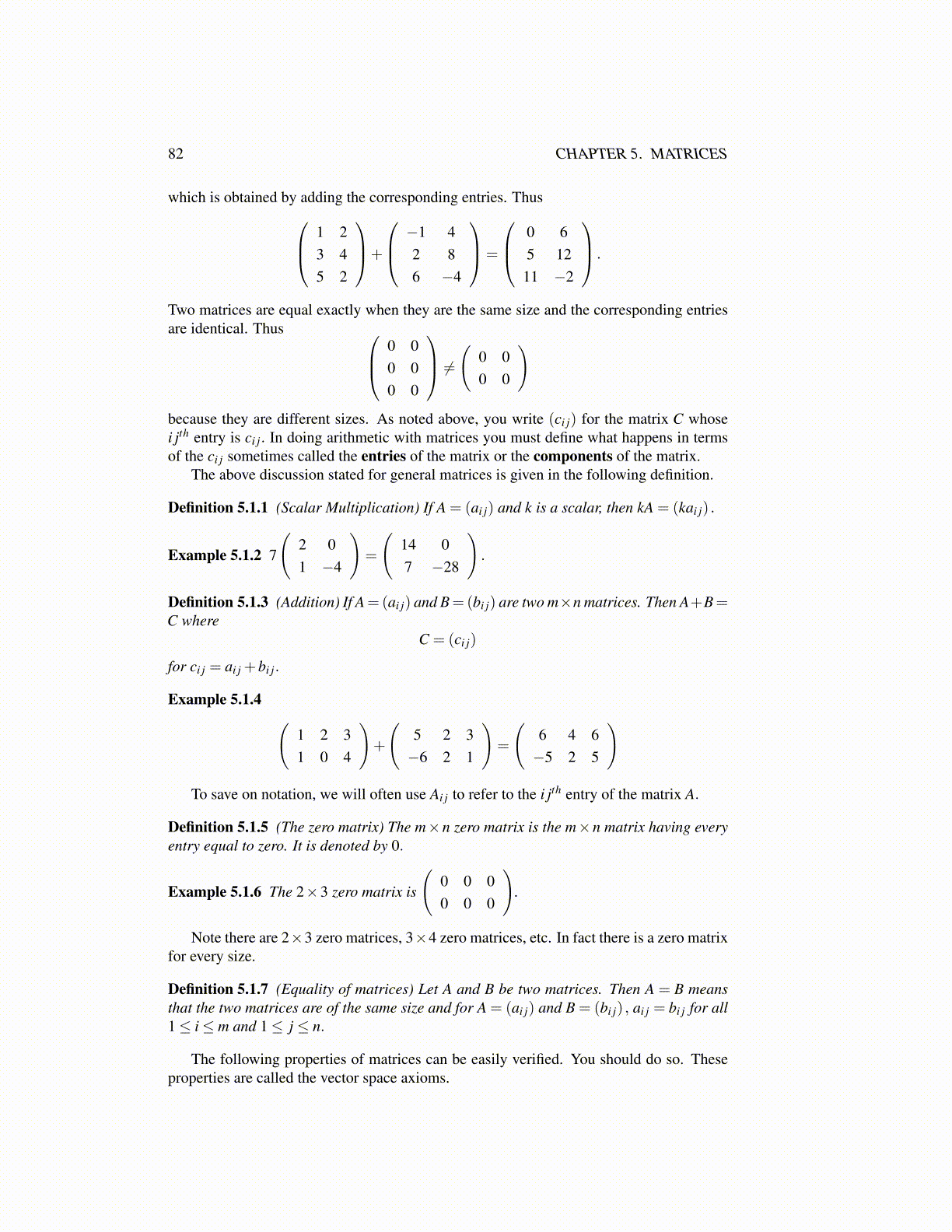
82 CHAPTER 5. MATRICES
which is obtained by adding the corresponding entries. Thus 1 23 45 2
+
−1 42 86 −4
=
0 65 12
11 −2
.
Two matrices are equal exactly when they are the same size and the corresponding entriesare identical. Thus 0 0
0 00 0
̸=( 0 00 0
)
because they are different sizes. As noted above, you write (ci j) for the matrix C whosei jth entry is ci j. In doing arithmetic with matrices you must define what happens in termsof the ci j sometimes called the entries of the matrix or the components of the matrix.
The above discussion stated for general matrices is given in the following definition.
Definition 5.1.1 (Scalar Multiplication) If A = (ai j) and k is a scalar, then kA = (kai j) .
Example 5.1.2 7
(2 01 −4
)=
(14 07 −28
).
Definition 5.1.3 (Addition) If A=(ai j) and B=(bi j) are two m×n matrices. Then A+B=C where
C = (ci j)
for ci j = ai j +bi j.
Example 5.1.4 (1 2 31 0 4
)+
(5 2 3−6 2 1
)=
(6 4 6−5 2 5
)
To save on notation, we will often use Ai j to refer to the i jth entry of the matrix A.
Definition 5.1.5 (The zero matrix) The m×n zero matrix is the m×n matrix having everyentry equal to zero. It is denoted by 0.
Example 5.1.6 The 2×3 zero matrix is
(0 0 00 0 0
).
Note there are 2×3 zero matrices, 3×4 zero matrices, etc. In fact there is a zero matrixfor every size.
Definition 5.1.7 (Equality of matrices) Let A and B be two matrices. Then A = B meansthat the two matrices are of the same size and for A = (ai j) and B = (bi j) , ai j = bi j for all1≤ i≤ m and 1≤ j ≤ n.
The following properties of matrices can be easily verified. You should do so. Theseproperties are called the vector space axioms.